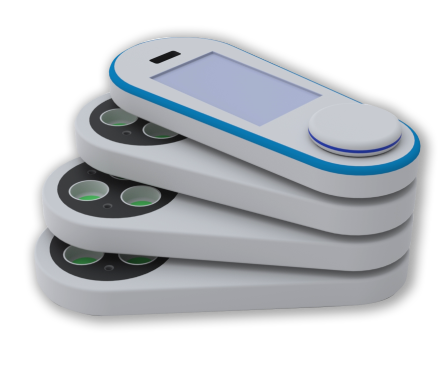To monitor the illegal trade in big cat products
Monitor the illegal trade in big cat products
Border areas and markets on the Thai/Myanmar border
Problem
Customs officers can’t identify the species origin of a bone sample at the point of collection. The time and cost of sending samples to a lab in Bangkok for analysis are too great. As a result, many illegal products pass through the border without detection.
Goal

Step 1
Prep the sample
Customs officer grinds the bone sample and places it in a solution for a short period of time.
- The cells are opened up and the DNA is freed.
Step 2
Place the sample in the test zone
They place a few drops of the solution onto the paper test zone.
- The DNA from the sample is immobilized onto the paper surface. The dried reagents that have been printed onto the paper (through laminar flow) move to the DNA and, if the DNA is from the target species, it initiates an amplification reaction, causing the DNA to become concentrated.
Step 3
Read the result
After one minute, the customs officer checks the device for a simple colour change. A change of colour tells them the sample is from a big cat species.
- If the DNA amplifies, it will spark a chemical reaction, producing a simple colour change.
The Result
Customs seize the illegal goods and use the evidence to prepare a case against the trafficker. Law enforcement are able to charge more people for trading illegal wildlife goods and more illegal products are destroyed. This increases risk in the market and disrupts and reduced the trade over the long-term.
To determine the migration route of caribou
Determine the migration route of caribou (a threatened species in Canada) to ensure Oil Sands operations do not interfere.
Problem
Researchers cannot identify faecal samples quickly in the field and laboratory analysis is too expensive and too slow to support on-the-spot management decisions.
Goal
Industry researchers need a quick and inexpensive way to detect caribou in the field from faecal samples.



Step 1
Prep the sample
The researcher places a faecal sample in a solution for a short period of time.
- The cells are opened up and the DNA is freed.
Step 2
Place the sample in the test zone
They place a few drops of the solution onto the paper test zone.
- The DNA from the sample is immobilized onto the paper surface. The dried reagents that have been printed onto the paper (through laminar flow) move to the DNA and, if the DNA is from the target species, it initiates an amplification reaction, causing the DNA to become concentrated.
Step 3
Read the result
After one minute, the researcher checks the device for a simple colour change. A change of colour tells them their sample is from caribou.
- If the DNA amplifies, it will spark a chemical reaction, producing a simple colour change.
The Result
Making on the spot management decisions means stakeholders can better assess the effectiveness of Environmental Impact Assessments. With simple and inexpensive testing, governments and other organisations in developing countries – where access to lab testing is limited – will be able to include species genetic field testing in their EIAs.
